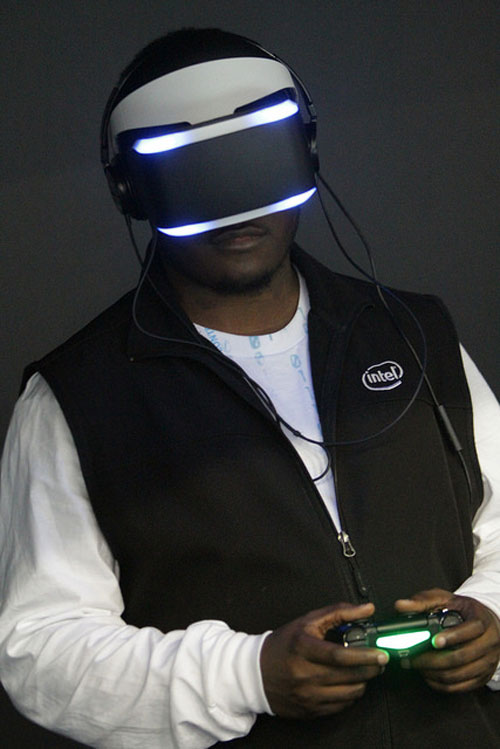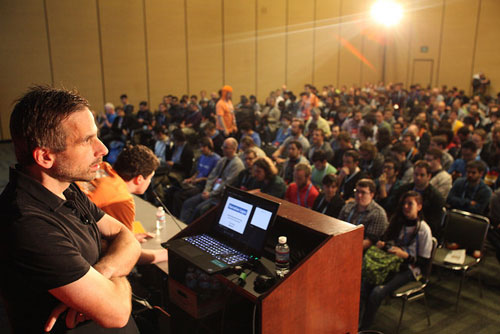The Game Developers Conference, an annual gathering of game makers, marketers, and thinkers held here in San Francisco, is packed with talks, announcements, games, demos, and awards. With over 24,000 attending over an intense 5-day whirlwind, it is impossible to get to everything you are interested in, much less absorb the things you don’t know about. This year’s advocacy track was packed with talks about creating a healthier, more diverse industry. Unity, the engine behind most mobile games at the moment, announced its newer, more social engine connectivity; Valve was there showing off their growing Steam box streaming ecosystem and the common areas were strewn with beautiful, quirky, frustrating, and unique indie games. So here are my 3 highlights from the week.
1. Project Morpheus
This year’s most exciting — if not surprising — announcement was Project Morpheus, Sony’s new PS4 peripheral prototype virtual reality headset. The company’s tag word for the launch? Presence. Their challenge is to get the player to feel integrated with the simulation. The visor, which tightens on like a bike helmet, has two HD screens and some fancy new optics, which make the world inside feel all-encompassing. The largest hurdle to the kind of emersion Sony is aiming for? You can’t move much, the cable tethering you to the PS4 restricts your body’s range of motion. It doesn’t seem like a big deal until you have the set on, your brain resettling into the simulated dusty water of the undersea demo Sony used to show off their day one prototype.

You know it’s not real, but you’re suspending disbelief. Your eyes focus and you’re in a shark cage, bobbing softly among coral. Above you a boat waits; the water looks deep and brightly colored fish are swimming through the bars of the cage and for a moment you do feel present. That is until you turn around to look behind you only to see your virtual avatar body standing there, neck ending in a smooth nub. In fact the whole experience feels forward facing, sure you can turn side to side and even look behind you but the simulation encourages you to stay facing front. Whether this bias will feel constricting in future games is up to developers.
Otherwise it’s fun, easy to enjoy, and has none of the pressure or overheating I’ve experienced with the Oculus visors, which leave me red faced and hot. If you want specs: display resolutions, LED layouts, or specifics of the head tracking and movement capture, the Internet is full of them, try The Verge or Sony’s Blog.




